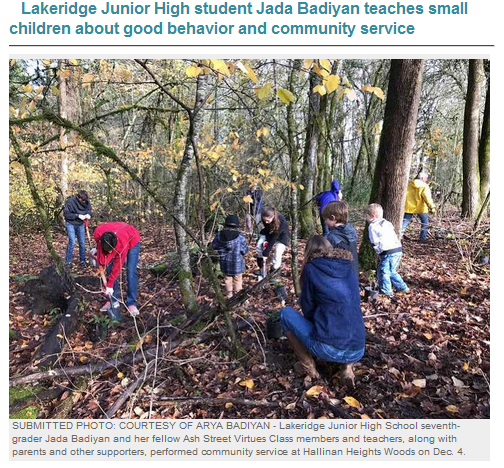Empowering Junior Youth
Spiritual education for: Children | Junior Youth | Adults
Junior Youth Spiritual
Empowerment Program
by Christopher L. Slaughter - Lake Oswego, OR
In nearly every country and culture adolescents between the ages of 11 and 14 are being empowered to effect positive change in their communities. The catalyst for this global effort is the Junior Youth Spiritual Empowerment Program.
Aims of the Program
Junior youth learn to:
Foster their spiritual identity and empower themselves to serve humanity.
Create a moral structure in their lives.
Develop their power of expression.
Recognize the moral issues underlying everyday decisions and identify the moral implications of speech and actions.
Become valuable resources within the community.
What is a Junior Youth Group?
From a practical standpoint, a Junior Youth Group is a group of 10 to 15 friends that gather weekly at an organized meeting facilitated by older individuals known as “animators.” The weekly gatherings are organized into six distinct parts:
Devotional session where prayers and readings from the world’s religions are shared.
Book study for developing important communication skills designed to train the junior youth to articulate abstract concepts into intelligent and coherent language.
Discussion, planning, and reflection on the activities of the group.
Focus on art, drama, and music to introduce the junior youth to various artistic modalities to foster and encourage structured creativity.
Physical activities, healthy recreation, and sports are an integral part of the meetings.
Social time as the meeting wraps up.
How do these groups work?
The power and substance of the group actually happens outside the confines of the structured meetings. Studying spiritual principles, art, cooperation, and leadership are important; however, by themselves they are limited in effectively training change agents within our communities. The real work is seen in the various service projects undertaken by the junior youth.
The youth are trained to observe the condition of their community and look for things that they would like to see changed. As a group, we discuss the ideas and a service project is born. The projects can be simple and immediate, like picking up trash in a park. Or they can be highly involved and require significant logistics planning, like addressing homelessness or a drug problem within a community, or rebuilding a playground with the cooperation of the local government and civic community.
It is during these service projects that learning actually takes place. By creating a real-world context, discussions around spiritual, moral, and ethical education are brought to life and the youth start to make the connection between theory and application. This gives the animators powerful tools to make the program work and solidify the spiritual and moral principles in the minds of the junior youth. The ultimate goal is to effectively guide the junior youth in the process of creating a strong moral compass that will assist them in navigating the arduous adolescent years and create habits of excellence and service as they take their place as leaders in our communities.
How does this affect the lives of junior youth?
Our fledgling group is in the process of identifying possibilities for our first service project. The animators and youth are excited and actively engaged in the process. Imagine three 11-year-olds walking around, purposefully looking for a way to make their community a better place, knowing they are going to cause the change… Now imagine hundreds of thousands of youth all over the world resolutely looking for opportunities to make their communities better; armed with the experience, skills, and desire implement projects to effect change in the community. It won’t be long before these youth become adults, millions strong, actively striving to improve the human condition; knowing beyond a doubt that they can, must, and will make a difference… This thought gives me hope… and it is why the animators throughout the world give their time to strangers… to make a difference.
Get involved.
Call us. Get your questions answered.
1-800-228-6483
Find junior youth groups in your neighborhood.







